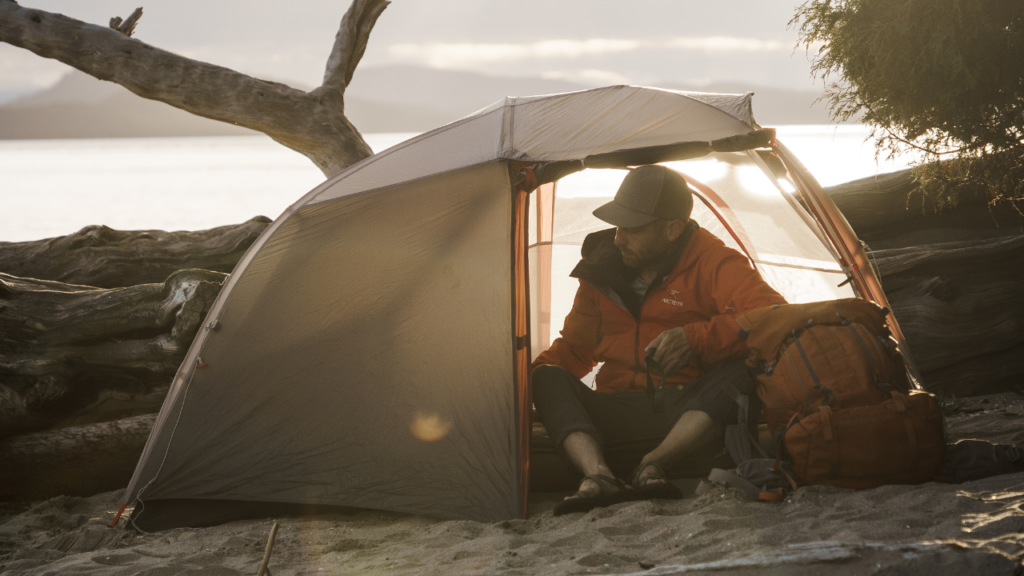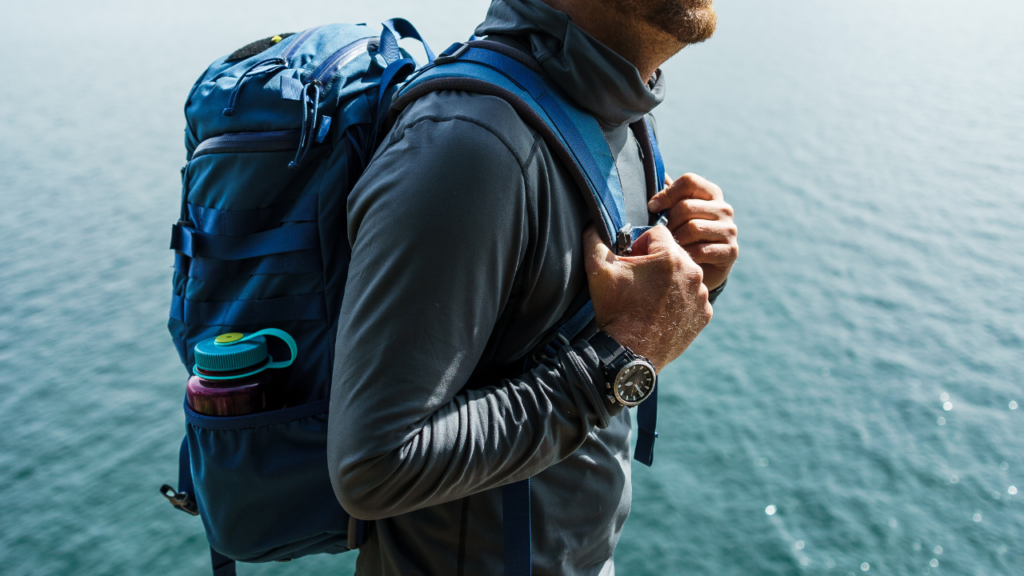I’ve been doing a lot of backpacking lately with people who are newer to the past time. This means that I’ve borne witness (bared witness? Ah whatever, you get the idea) to a number of cringe-worthy mistakes by my peers who mean well, but just aren’t in the know about backpacking gear.
I see flubs while hiking, faux-pas around the tent, and self-defeating practices that scare off that precious backcountry sleep. Well no more! It’s time to correct these common backpacking gear mistakes and get everyone looking like a pro.

Beginner Backpacker Mistake #1: Not Getting Good Sleep (For a Number of Reasons).
What do ratings on sleeping bag mean?
Just because a bag is rated for a certain temperature, doesn’t mean that you will be comfortable if the thermometer drops to exactly that number. The rating you’re looking at may simply mean that the bag can handle that type of weather and get you through to sun up. Some companies use the EN Rating System, which will tell you the comfort range, as well as the core (or risk) range.
This will help you make an informed choice about what bag will be best for the conditions you expect to encounter. Making sure you’re comfortable (and not just clinically alive) will significantly improve your quality of sleep, and therefore, the quality of your outdoor adventure. I go into more details about sleeping tips for backpacking in this article.
Do sleeping bags actually keep you warm?
They do if you use them correctly. Once you get a bag that’s appropriately rated for the cold conditions, you need to make sure that you zip it up all the way (which can take some finagling). It’s also important that the hood (which is key for staying warm in subzero conditions) is synched up snugly, leaving pretty much just your nose and mouth exposed. Your body naturally fills the inside of the sleeping bag with warm air. You want to seal that in that coziness to ensure a shiver-free evening. Just make sure that you can breathe, and that the moisture from said breathing can escape.
Do I need a backpacking pillow inside the sleeping bag?
Actually, no. In order for the hood to seal properly around your head you have to keep the backpacking pillow on the outside of the sleeping bag. I totally get the strategy though. Sometimes in the middle of the night pillows mysteriously grow legs.
Secure the pillow
Securing the pillow in your sleeping bag might solve this problem, but it will create the new issue of letting too much heat out through the top of the bag.
My tip is to keep your backpacking pillow in place is to stuff something between it and the tent wall. This combined with the weight of your head will at least create some pressure that should keep it locked in place. Don't have a backpacking pillow yet? Consider one for a good night sleep in the woods! Check out this list of inexpensive hiking gear.
Why are my feet so cold in a sleeping bag?
If your sleeping bag is appropriately rated for the weather, then the next big mistake I see campers making is letting their feet hang off the end of their sleeping pad/mattress. The bag is an important part of staying warm, but elevating your whole body off the ground – the ground that gets progressively colder throughout the night – is the other big part of the equation. For starters, make sure that your sleeping pad is long enough for you, not just in theory, but when you get the pillow on there and plunk down like you usually do. The other option is to use your spare clothes to make a little buffer. Keep those feet up off the ground and you should find that they stay warmer, which will also translate to much better sleep.

Beginner Backpacker Mistake #2: Inadequate Tent Set Up
Do you need ventilation in a tent?
You betcha! Especially if you’re in a moist environment. But even if it seems dry on the outside, you (and any tent mates you may have) create a surprising amount of moisture just by breathing. By the time you wake up, which may be quite premature, you could be looking at a tent filled with condensation, ready to rain down at any moment.
Tents need proper ventilation
Not properly ventilating a tent is another common mistake I see new backpackers frequently make. Any decent model should have a top flap or window vent. Some people think that by keeping this closed the tent will stay warmer. That might be true if it weren’t for the unavoidable condensation kicker. The negligible temperature differential of opening the vent is well-outweighed by the cost of waking up wet.
What are guy lines for on a tent?
Guy lines ensure that the outermost layer of your tent is pulled away from the core. This way, if any precipitation falls while you’re camping, it will shed off your shelter more easily, rather than saturate the walls, and then ultimately, the inside. Don’t forget about the one in the back. Most tents will have a midpoint fixture that should be staked out nice and tight.
How do you attach rain flies to a tent?
A lot of people don’t know about their tent’s attachment points that are meant to anchor the fly to the tent poles. This may be a bit of Velcro, or something along those lines. Taking the time to search these out and put them to use will really help the tent to maintain its structural integrity on a windy night (something that may not always be clearly stated in the forecast).
Next, staking out the guy lines on the fly will make it that much stronger/effective. Be sure to play around with the corner anchors to make the fly as taut as possible. You’ll be happy you did when an unexpected gust kicks up. Plus, it’ll make your tent super photogenic for those “getting away from it all” Instagram posts.

Beginner Backpacker Mistake #3: Backpack Straps
What are the straps on a backpack used for?
After the two basic shoulder straps, the average hiker’s understanding of what all the other doohickeys are for falls off dramatically. So often I see people with their side straps unbuckled or the tension completely let out of the various compression points. The goal is to get the contents of your pack squeezed in nice and close to your body.
Attaching gear to the straps or the outside
When you attach random backpacking gear to the outside, the heavier and sloppier your backpack is going to feel. Don’t forget about the smaller ones on the top of your shoulder straps. Give those a good synch in order to bring the whole pack closer in. Remember to do this periodically, as they will naturally loosen throughout the course of your hike.
Learn about your packs straps and adjustments
So before heading off on your next trek, take a full tour of your own backpack and note of what you may be underutilizing. Those gradual aches, corresponding frustrations and constant readjustments can be mitigated by using your pack’s various straps to their full potential. Take time to learn the adjustments and your body will be happy.
Bonus but related backpacking tip
Try your best to get as much gear inside the pack as possible. Unnecessarily attaching things to the outside straps will further throw off the center-of-gravity and responsiveness of your bag.
Backpacking Gear Mistakes are Easy to Make
Those are some of the stand out mistakes I’ve noted this season. Are you guilty of a few? Be honest! It’s totally okay if you are because now you know how to correct them. And isn’t that what hiking is all about? Getting messy, making mistakes… oh wait, that’s the Magic School Bus – but the same principles apply here! You’re out there, you’re doing it – and now you can hone your skills for an even more enjoyable experience. Let me know if I missed any big ones.
Check out more of my other backpacking gear mistakes and tips:
Subscribe to this site for a newsletter and get gear tips in your inbox!
Backpacking Gear Mistakes Article Sponsor
Shout out to Mystery Ranch for sponsoring this video/article combo. They make killer backpacks that I’ve personally had the pleasure of putting through the real world ringer. Click this link if you want to learn more straight from the horse’s mouth, or check out my recent Bridger 65 backpack review and the battle of the backpack review: Osprey Atmos vs Gregory Baltoro vs Mystery Ranch Bridger.





